Ted and I spent today at Rotorua on the northern side of NZ’s North Island. The area is known for its geysers, steam vents, and hot mud pools. We had to drive over an hour to get to Rotorua, and we passed miles of pretty beaches along the way.
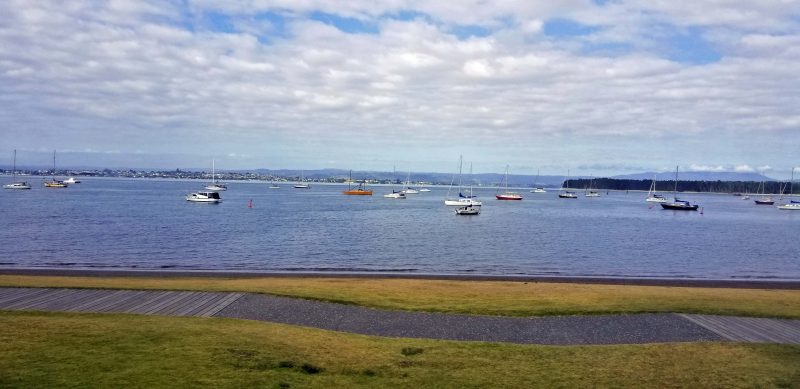
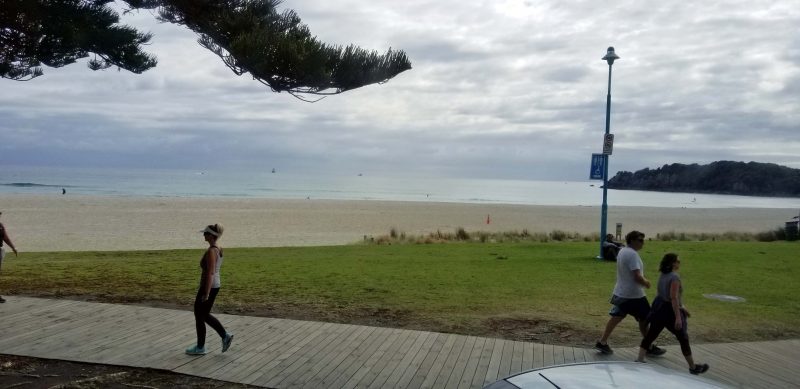
We had a five-part day at Te Puia in Rotorua: visits to the Maori cultural center, followed by the Maori heritage workshop, lunch, a walk through the active geothermal area, and a visit to the kiwi habitat.
The cultural center was very much like the New Zealand part of the Polynesian Cultural Center that we visited in Hawai’i two years ago, but with the addition of a welcoming ceremony in which we took part. We selected a chief from our group (George), and he received instructions about his role in the ceremony. To begin the ceremony, a warrior of the tribe attending the ceremony approached the chief (George), making war-like noises and actions. George did not react (indicating he wanted peace, not war), so the warrior offered George a leaf as a sign that the warriors are attending in peace. The chief (George) accepted the leaf, gave the warrior a strong handshake, and bumped noses with him twice. This is a sign of sharing the breath of life and reminds us that we all live in this air together. One of the Maori also told us this is why the Maori have flat noses.

Inside the building, a performing group did six or seven cultural dances–some with the men performing, some with the women performing, and some in which they danced together, including a love song dance used for marriages. The white streaks above the girls’ heads in the second photo below are sticks that they toss back and forth–training for quick hand-eye coordination which is helpful in battle. We were reminded that the Maori don’t lose wars. They are the only indigenous tribe in the world that was not defeated by its invaders (the British). We were also reminded that early Maori were cannibals.
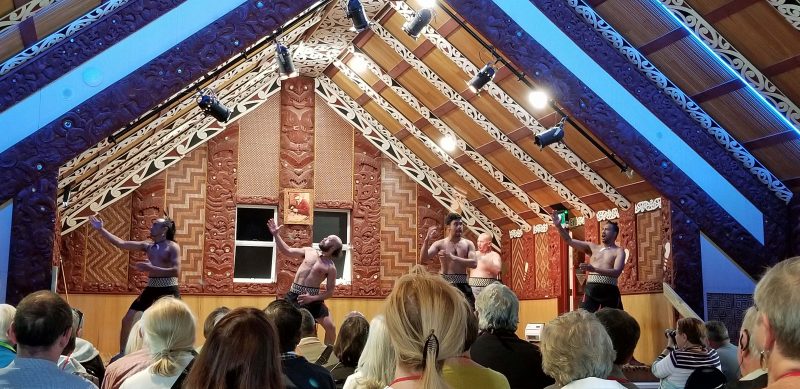

A number of men from our tour group were invited to come onstage to learn a haka–a chant that warriors (including the All-Blacks, NZ’s famous rugby team) perform to pump themselves up before a battle or a game. Do these guys look pumped up?
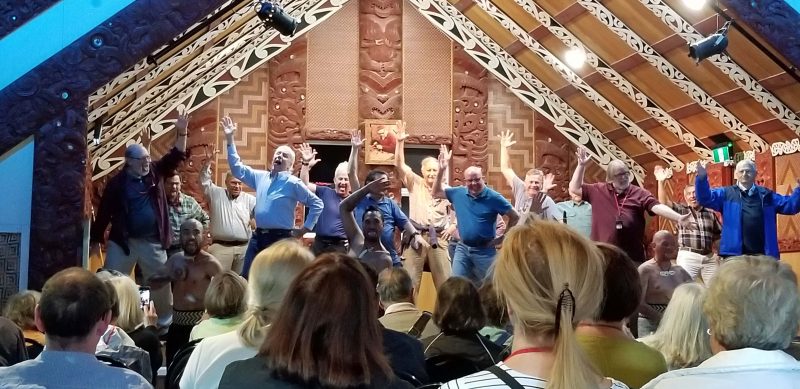
The next stop was the Maori cultural heritage workshop. In recent years, the Maori people have been increasingly recognized as an important part of New Zealand history. The Maori language and history are now required school subjects for all students, and Maori is one of the three official languages of New Zealand (English, Maori, and sign language).
In the recent past, Maori were punished for speaking their native language in school and in public. To keep their culture alive, this intense workshop accepts only five students per term and teaches them to become master craftsmen in the Maori arts. As a nod to progress, some of the Maori objects are now made out of metals and other more durable materials instead of wood. Although most students are young, some older people also take the classes because they did not learn these arts when they were younger.
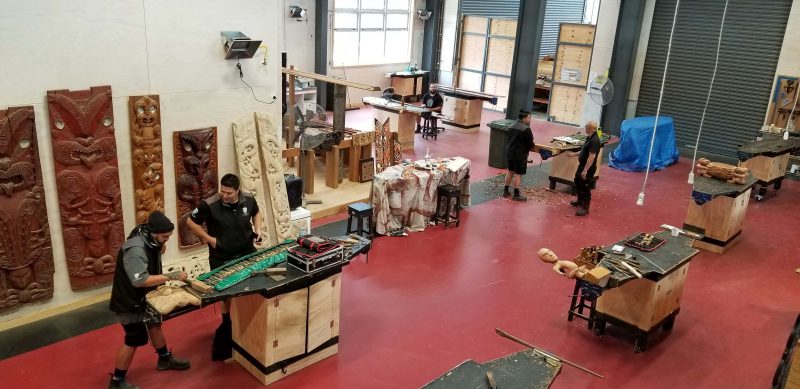
Our guide showed us how the Maori make clothing and other objects out of flax (the green leaf he’s holding). First, lay the leaf on the light-colored board in front of the guide and score it with a sharpened clam shell to determine a pattern, according to marks made on the board in advance. Then use the clam shell to scrape the green outer layer away from the fibrous inner layer (like running a scissors blade over gift box ribbon to make it curl). Doing this repeatedly separates all the fibers and also coats them with wax from the outer layer, making the fibers stronger (the tan drooping part of the leaf the guide is holding). The part of the leaf with the pattern (white marks on his leaf) remains and is stained to produce the desired pattern. To make stronger fibers for belts, etc., the guide rolled the fluffy, separated fibers together by holding the two ends and running the length of the taut fibers up and down his thigh. We had a chance to hold his finished product and to test its strength. Very soft loose fibers; very strong rolled fibers.

Here are some wrap-around skirts the Maori make from the flax leaves.

There are carvings of Maori gods along the pathways of Te Puia and each has its name beneath it. Our guide told us that the Maori alphabet has no f, but the wh makes an f sound. That means this god’s name is pronounced “Fera.” Sticking the tongue out as far as possible is a Maori gesture of fierceness.
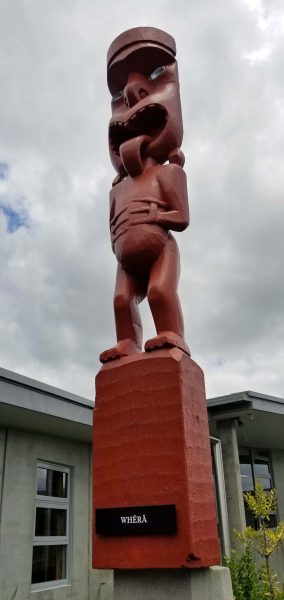
After lunch, we walked through the main part of the geothermal field. The mud fields don’t look spectacular, but they are dangerous. What looks like solid ground in these areas probably isn’t. As our guide put it, the good thing about falling into these is that you won’t have arthritis anymore; the bad thing is that your bones will be very clean, because you will be that well cooked. The mud in the second picture was actually bubbling because it was so hot. The arrows point to some bubbles that are bursting at the surface.
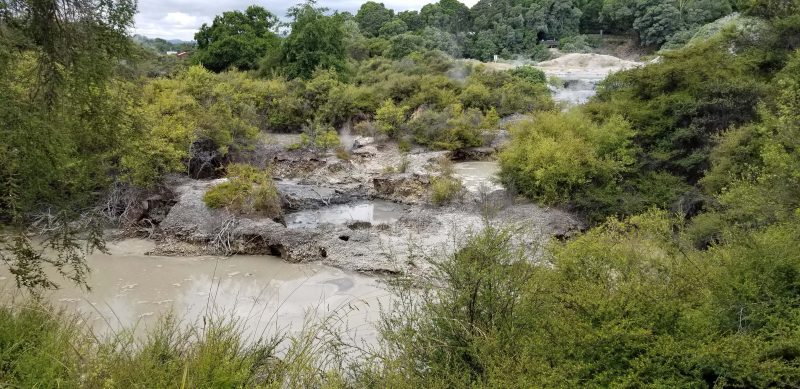
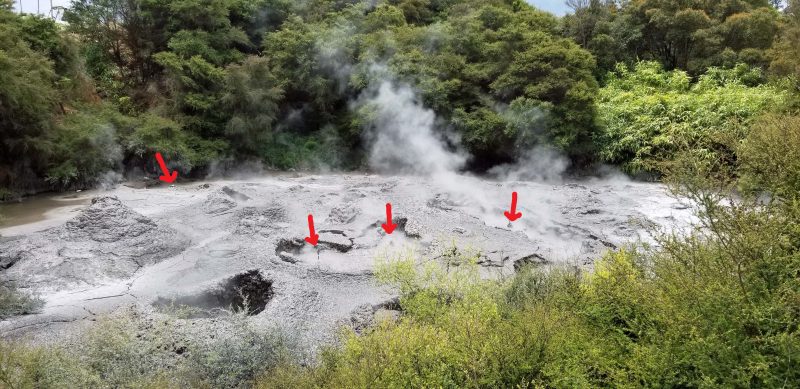
There are steam vents everywhere in this area. We could feel the warmth as we walked by them.
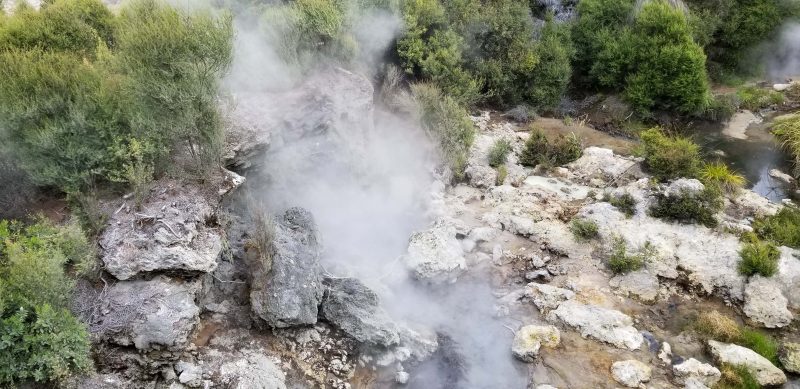
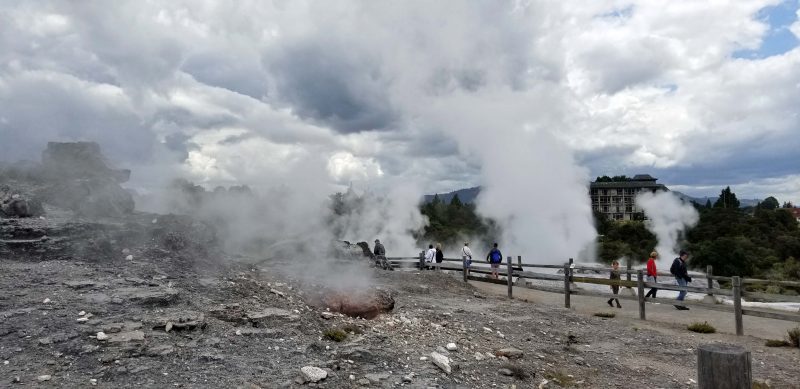
This is the largest geyser in the southern hemisphere (i.e., New Zealand). It is very active and erupts for about 40-50 minutes, then rests for about 20 minutes before erupting for another 40-50 minutes.
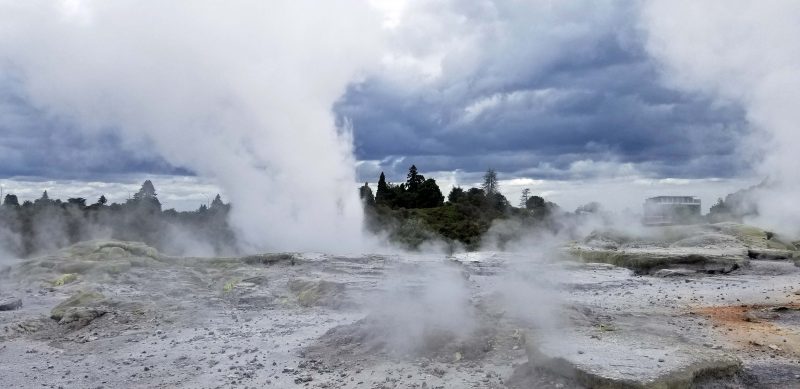
The lake on the right in this picture ranges from 50-100 degrees. It is illegal to swim in it, but our guide said people have been swimming in it for hundreds of years anyway. It’s very sulfurous, so it’s probably good for what ails you.
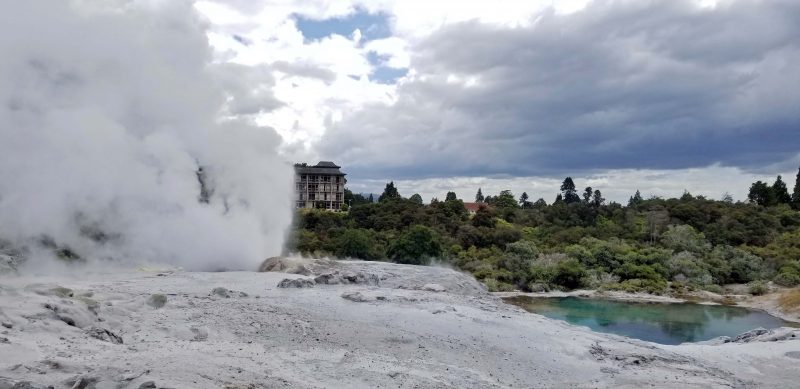
Our tour did not include a steam-cooked picnic lunch, but that’s an option. When you arrive at the park, you can order your meal. It’s put into the oven that straddles a steam vent in the first picture below. When it’s lunchtime, your meal has been cooked in a natural pressure cooker and is served to you at a picnic table in the geyser field.

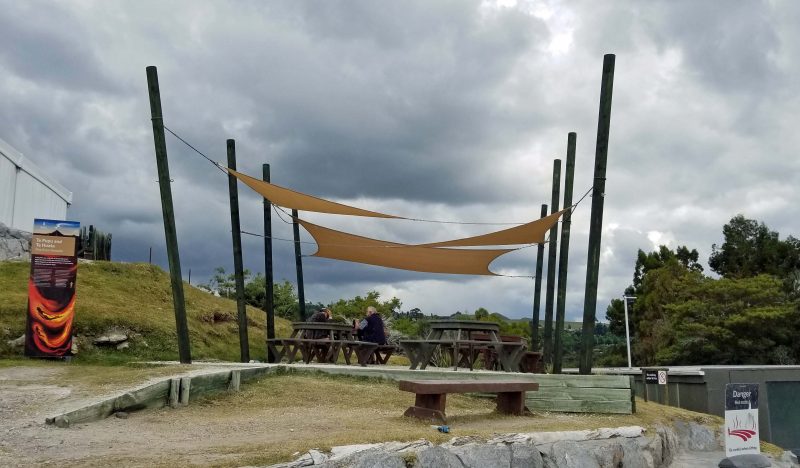
There are steam vents all around this area of NZ, including on private property. Some people fashion a lid for a steam vent in their yard and put their dinner into the vent before leaving for work. When they come home, dinner is ready–a natural slow-cooker. You can see by this picture how widespread the steam vents are–there’s steam everywhere. In fact, the entire city of Rotorua smells like sulfur, but the people living there don’t even notice it and we didn’t either after being there all day.
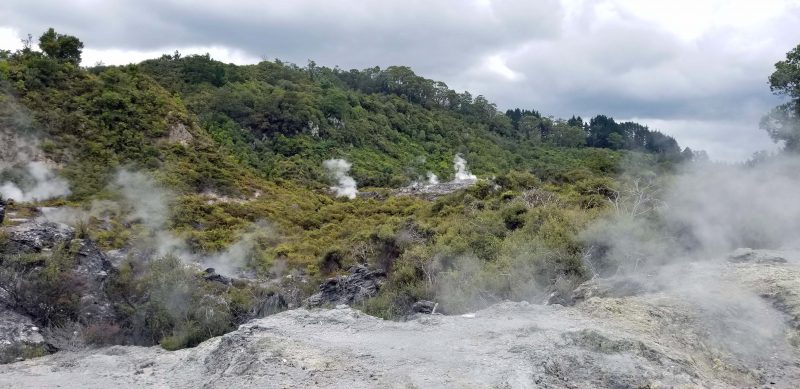
Our last stop before heading back to our ship for dinner was the kiwi bird sanctuary. Kiwis like to sleep during the day and come out at night, so the sanctuary has a dark indoor habitat for some of the birds. No photos were allowed in the darkened building and we were required to remain silent because light and noise disturb the kiwis. I settled for a picture of a stuffed kiwi bird on display.
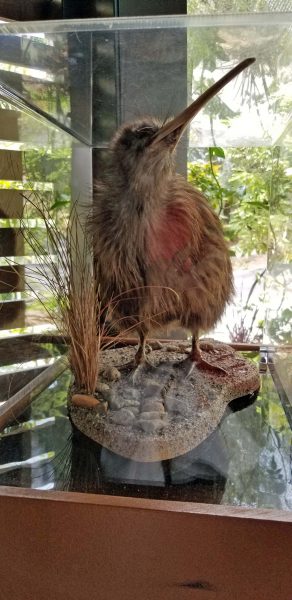
Ted and I have now seen geothermic land features in Yellowstone, Iceland and New Zealand. In our opinion, Yellowstone is the best place to see them because there’s such a wide variety of geothermal features in that park. Iceland is second, and we rank New Zealand third. All of them were worth seeing.